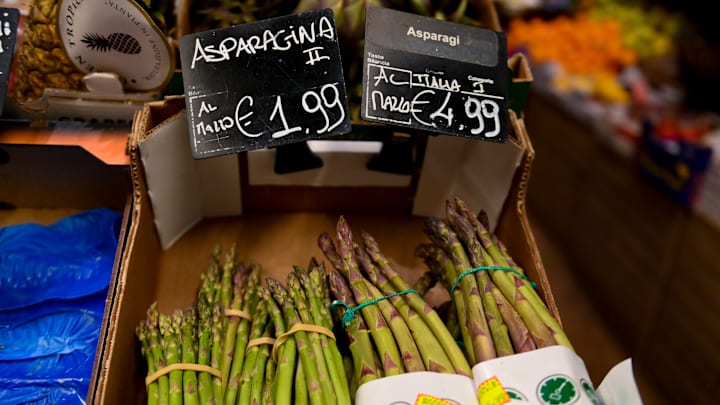When protecting your body from illness and signs of aging, glutathione is one of your most powerful tools. It supports your immune system, helps detox your liver and gives your skin a more radiant glow. Fortunately, some foods can boost your glutathione, helping you restore and maintain healthy levels.
What Is Glutathione?
Glutathione is a naturally occurring antioxidant found in nearly every cell in your body. It’s made from three amino acids — cysteine, glutamine and glycine. Unlike some antioxidants you can only get from food, your body produces glutathione on its own. However, certain factors can lower your levels, including chronic stress, pollution, poor diet, alcohol and aging.
Glutathione recycles other antioxidants like vitamins C and E so they can keep working in your body. It plays a major role in detoxifying your liver, supporting healthy immune cell function, repairing DNA and helping your mitochondria work more efficiently. This allows the body to create energy, speeding up recovery time and improving performance. These wide-ranging benefits explain why glutathione can improve energy, clear skin and build resilience against illness.
10 Foods That Can Boost Your Glutathione Levels
You can help your body make more glutathione — and preserve what it already has — by eating certain nutrient-rich foods. These ingredients support natural detoxification, reduce oxidative stress, and keep your skin and immune system functioning at its best.
1. Sulfur-Rich Vegetables
Cruciferous vegetables like broccoli, cauliflower, cabbage, Brussels sprouts and kale are loaded with sulfur compounds. Sulfur is a building block your body needs to produce glutathione, especially in the liver. These vegetables also contain certain compounds that may activate enzymes involved in glutathione recycling. Add lightly steamed broccoli or sauteed kale to your daily meals for a boost.
2. Garlic and Onions
Both garlic and onions are rich in sulfur-containing compounds like allicin, which helps kick-start glutathione production. They also contain flavonoids and prebiotic fibers that support gut health and indirectly aid immune function. Chop fresh garlic into salad dressing or use sauteed onions as the base of all your meals.
3. Avocados
Avocados naturally contain glutathione and provide the healthy fats your body needs to absorb fat-soluble antioxidants. They’re rich in fiber, potassium and vitamin E, supporting skin repair and inflammation control. Add half an avocado to your smoothie or spread it on whole-grain toast for a skin-nourishing breakfast.
4. Spinach and Other Leafy Greens
Spinach, collard greens, beet greens and Swiss chard are excellent plant-based glutathione sources. They also deliver magnesium and folate, two nutrients that are key to glutathione synthesis. Spinach, in particular, is a rich source of antioxidants, contributing to gut health and lowering your risk of various diseases. Blend your greens into smoothies for a tasteless option or use chard as a base for grain bowls.
5. Asparagus
Asparagus is among the best whole-food sources of glutathione. It’s also high in prebiotic fiber and folate, which support your gut. Roast asparagus with olive oil and lemon for a simple side dish that supports immunity and skin health.
6. Whey Protein
Whey protein provides cysteine, an amino acid essential for making glutathione. It’s beneficial if you’re stressed, recovering from illness or aging — all conditions that deplete glutathione faster. Blend a scoop of grass-fed whey protein into your post-workout smoothie for optimal recovery.
7. Turmeric
The active compound in turmeric, curcumin, has been shown to help raise glutathione levels and support liver detoxification. Its anti-inflammatory and antioxidant effects make it great for immune resilience. Stir turmeric into soups, sprinkle it on roasted veggies or make a turmeric latte with a pinch of black pepper for better absorption.
8. Brazil Nuts
Brazil nuts are an incredibly rich source of selenium, which your body uses to regenerate and maintain glutathione. Just one to two nuts per day is enough to meet your selenium needs — more can actually be harmful. Eat a Brazil nut as a snack or chop one up into yogurt or oatmeal.
9. Tomatoes
Tomatoes contain vitamin C, which helps maintain and recycle glutathione in the body. Cooked tomatoes also contain lycopene, a compound known to improve skin texture and reduce oxidative stress. Enjoy a fresh tomato salad in summer or cook them into soups and sauces year-round.
10. Citrus Fruits
Oranges, lemons, limes and grapefruits are high in vitamin C, which supports glutathione production. They also help brighten the skin and strengthen white blood cell activity. Start your day with warm lemon water or snack on orange slices between meals.
Other Tips for Boosting Glutathione Levels
In addition to eating glutathione-supportive foods, here are a few other ways to help your body naturally increase and protect glutathione levels:
- Get enough sleep: Deep, quality sleep helps reduce oxidative stress and allows your body to replenish glutathione.
- Exercise regularly: Moderate exercise boosts natural antioxidant production over time.
- Manage stress: Chronic stress uses up glutathione faster. Incorporate meditation, yoga or deep breathing.
- Avoid alcohol and smoking: Both deplete glutathione levels and increase oxidative stress.
- Take a break from processed foods: Refined sugars, trans fats and preservatives can interfere with glutathione synthesis.
Improve Your Health From Within
You can boost your glutathione levels with just a few mindful choices each day. By eating the right foods, getting enough rest and managing stress, you support one of your body’s most powerful natural defenses.
